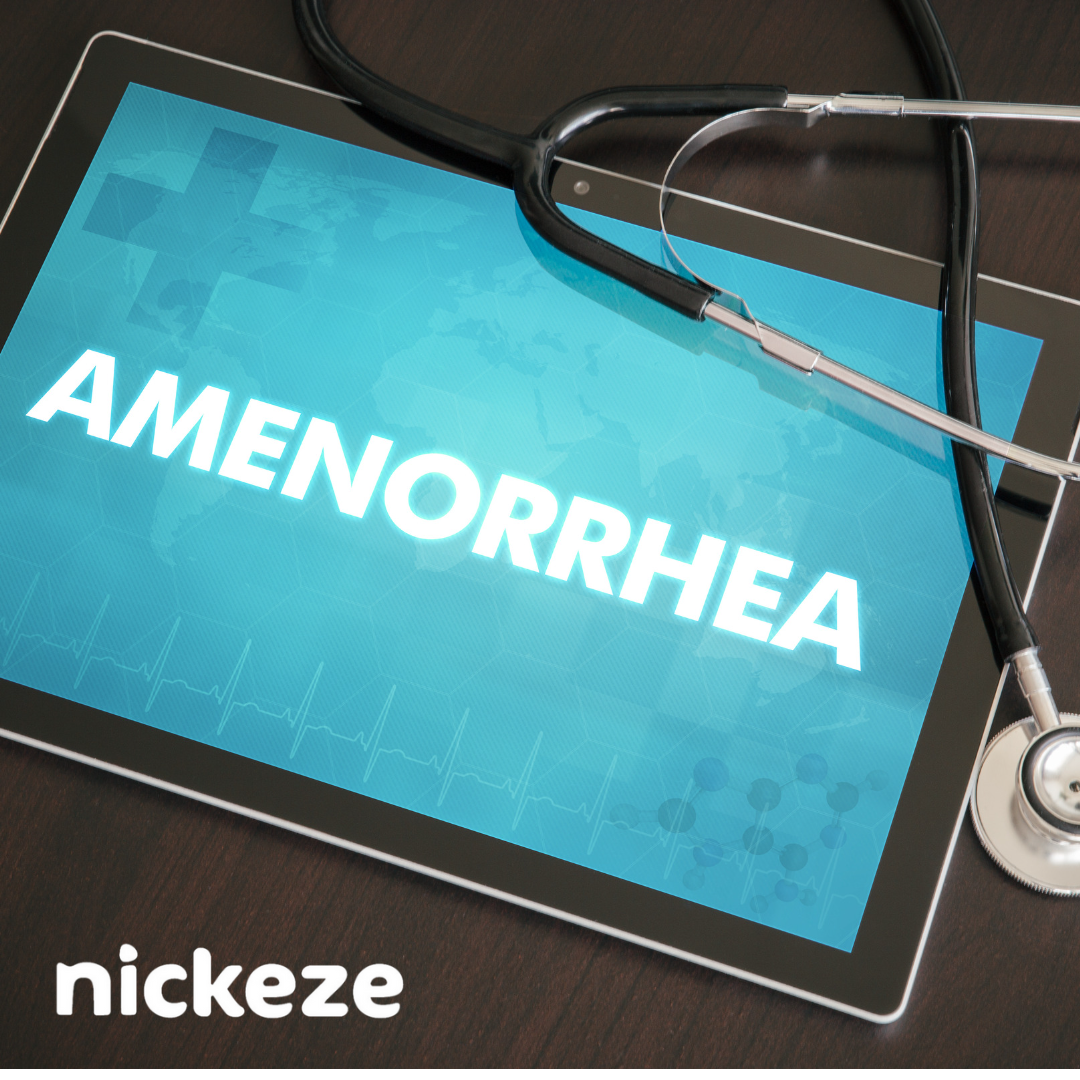Amenorrhea
Nickeze gives regular educational talks on menstrual health and related topics. One of the concern of many parents is when will their daughter get her period and what age should one expect it to come? However, what if it doesn't come and what could be causing her period not to start? Or what if she has had her period and the stops? This is referred to either primary amenorrhea and secondary amenorrhea. Regardless of which one, it is important to seek medical attention to have it further investigated.
What is Amenorrhea?
Amenorrhea is when you aren’t getting your periods even though you have gone through puberty, you aren’t pregnant, and haven’t gone through menopause where menopause is defined as the cessation of a period for longer than one year
Amenorrhea needs to be differentiated from having irregular periods. If you have amenorrhea, you never get your period.
Two Types of Amenorrhea
Primary Amenorrhea and Secondary Amenorrhea
Primary Amenorrhea
This is when you haven’t had a period by the age of 16. The two main causes are:
Chromosomal or genetic abnormalities can cause the ovaries to stop functioning normally.
Turner syndrome, a condition caused by a partially or completely missing X chromosome, and often characterized by high levels of testosterone, are an example of a genetic abnormality that can delay or disrupt the onset of a period.
Problems with the hypothalamus or pituitary gland in the brain can cause an imbalance of hormones that can prevent periods from starting. An example of this is an eating disorders, like anorexia nervosa, excessive exercise that we sometimes see in athletes, and extreme physical or psychological stress like the loss of a loved one, or a combination of these factors can also disrupt the normal functioning of the hypothalamus or pituitary gland, delaying the onset of menstruation.
In rare cases, physical problem for example, the absence of reproductive organs can also lead to primary amenorrhea. Missing portions of the reproductive tract can cause endocrine disruptions and may combine with hypothalamic or pituitary problems to prevent menstruation. Blockages may also prevent menstrual bleeding, making it seem like a girl has primary amenorrhea, even if her menstrual cycles are actually normal.[1]
Secondary Amenorrhea
This is when you have had your period, but they have stopped for 3 months in a row or not having periods for at least 6 months after having normal periods.
- Natural Causes
- Pregnancy
- Medications such as certain contraceptive pill, certain anti-depressants, chemotherapy and radiation.
- Scat tissue in the womb.
- Hypothalamic Amenorrhea: Problems with the hypothalamus or pituitary gland in the brain can cause an imbalance of hormones that can prevent periods from starting. Conditions such as eating disorders, excessive exercise, and extreme physical or psychological stress or a combination of these factors can also disrupt the normal functioning of the hypothalamus or pituitary gland, delaying the onset of your period, as discussed earlier.
- Gynecological conditions, for example, Polycystic ovary syndrome (PCOS). PCOS occurs when a woman's body produces more androgens (a type of hormone) than normal. High levels of androgens can cause fluid-filled sacs or cysts to grow in the ovaries, interfering with the release of eggs (ovulation). Most women with PCOS either have amenorrhea or experience irregular periods, called oligomenorrhea. Another gynaecoogical condition called Fragile X-associated primary ovarian insufficiency (FXPOI). The term FXPOI describes a condition in which a woman's ovaries stop functioning before normal menopause, sometimes around age 40. It is relatively common among women who seek treatment for amenorrhea.[2]
- Thyroid Issues: The thyroid produces hormones that control metabolism and play a role in puberty and menstruation.9[3]A thyroid gland that is overactive (called hyperthyroidism) or underactive (hypothyroidism) can cause menstrual irregularities, including amenorrhea.[4]
www.nickeze.com
References
[1] American College of Obstetricians and Gynecologists (ACOG) Committee on Practice Bulletins—Gynecology. (2013). Practice bulletin no. 136: Management of abnormal uterine bleeding associated with ovulatory dysfunction. Obstetrics and Gynecology, 122(1), 176–185.
[2] ACOG. (2014). ACOG Committee Opinion: Primary ovarian insufficiency in the adolescent. Retrieved May 31, 2016, from https://www.acog.org/clinical/clinical-guidance/committee-opinion/articles/2014/07/primary-ovarian-insufficiency-in-adolescents-and-young-women
[3] U.S. Department of Health and Human Services Office of Women's Health. (2015). Thyroid disease fact sheet. Retrieved May 31, 2016, from http://womenshealth.gov/publications/our-publications/fact-sheet/thyroid-disease.html
[4] Master-Hunter, T., & Heiman, D. L. (2006). Amenorrhea: Evaluation and treatment. American Family Physician,73, 1374–1382. Retrieved May 31, 2016, from http://www.aafp.org/afp/2006/0415/p1374.html





